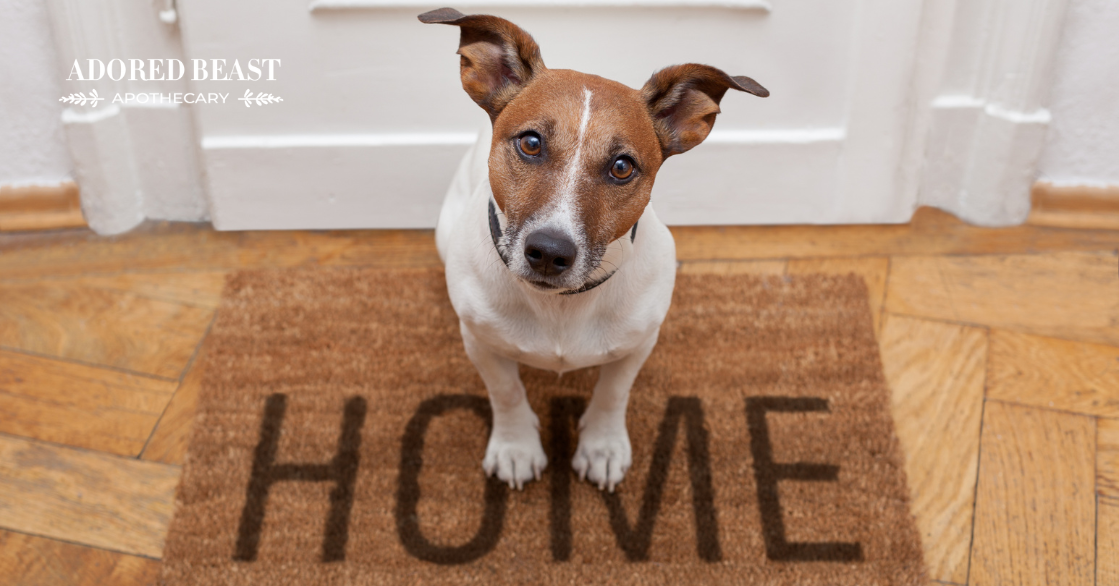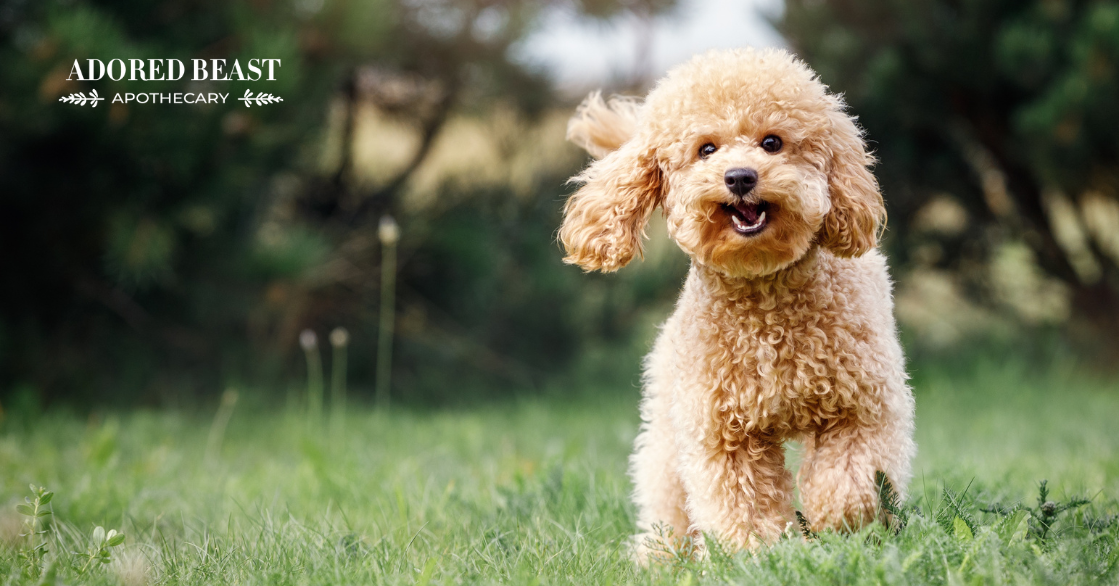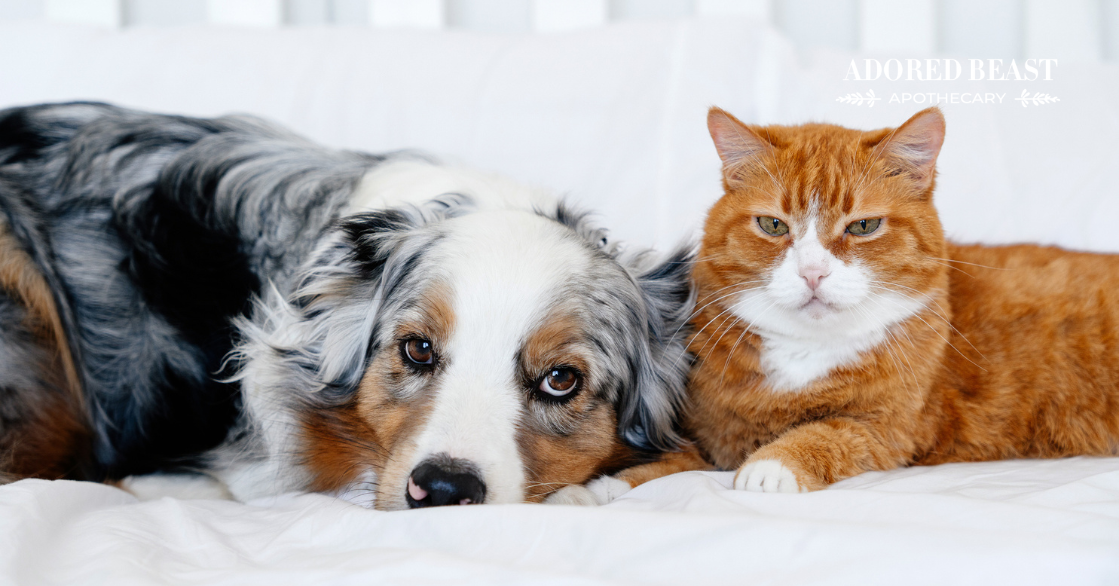Itching, scratching, sneezing, licking, asthma… these are all symptoms of allergies in our adored beasts.
And sometimes, those allergies are caused by things hanging out in our homes! Our furry friends can be sensitive to many different allergens, and obviously, if we can, we want to get rid of them!
Thankfully, it can be really easy to reduce allergens in the house. BONUS: This is really good for our own health too!
Common Household Allergens that Bother our Pets
Many of the allergens in our homes that impact us also impact our pets, sometimes even more due to their proximity to floors, carpets, and other surfaces. Here are some of the most common household allergens that can cause discomfort for our animals:
- Chemical-Based Cleaning Products: Many common cleaning products, such as bleach, ammonia, and aerosol sprays, release volatile organic compounds (VOCs) that can irritate pets’ respiratory systems, skin, and eyes. Even things like scented candles and air fresheners can be irritating. And our animals often get closer to them than we do – so they’re a bigger problem for their sensitive systems!
- Dust and Dust Mites: Dust mites are tiny creatures that feed on dead skin cells and are often found in carpets, bedding, and upholstery. Yuck! Pets with dust allergies can experience symptoms like itching, sneezing, and respiratory discomfort.
- Pollen and Outdoor Allergens: Even when your pet stays indoors, pollen from outside can be tracked into the home on shoes, clothing, and paws. This can lead to allergy symptoms in sensitive pets. You’ll often see these allergy symptoms at certain times of the year.
- Mold and Mildew: Mold spores thrive in damp environments like bathrooms, basements, and kitchens. These spores can cause respiratory issues for both pets and people, especially in humid climates or older homes.
- Pet Dander from Other Pets: Cats and dogs with skin conditions or excessive shedding can develop their own dander issues, potentially affecting other pets in the household who are sensitive to allergens.
How to to Reduce Allergens in the House
Minimizing these triggers can make a world of difference to your pet’s health and comfort. Here are some pet-safe tips on how to reduce allergens in the house:
- Switch to Pet-Safe, Non-Toxic Cleaning Products: Opt for natural cleaning products and look for cleaning products labeled as “pet-safe” or “non-toxic” and avoid ammonia, bleach, and aerosol sprays. Or, use natural ingredients like vinegar, baking soda, and lemon juice for everyday cleaning tasks. There are several natural cleaning recipes at this post.
- Vacuum Regularly with a HEPA Filter: Using a vacuum with a HEPA filter can significantly reduce dust, pollen, and pet dander. Aim to vacuum at least once a week, especially in areas where your pet spends a lot of time. Vacuuming can help reduce allergen particles such as pollen from outside and dust mites embedded in carpets and furniture.
- Groom Pets Regularly: Regular grooming can help reduce pet dander. Both cats and dogs can benefit from regular brushing, especially during shedding season, to prevent loose fur and dander from spreading around the home.
- Wash Pet Bedding and Blankets Often: Bedding and blankets can collect dust, dander, and even outdoor allergens like pollen. Wash your pet’s bedding at least once a week in hot water to kill dust mites and remove allergens. Consider using fragrance-free and hypoallergenic laundry detergents to minimize irritation. You can find out more about how to wash beds at this post.
- Maintain Proper Humidity Levels: Mold and dust mites thrive in high humidity. Aim to keep your home’s humidity level around 30-50% to prevent mold growth. Dehumidifiers and proper ventilation in areas like bathrooms and kitchens can help. For pets prone to dryness or sensitive skin, a room humidifier may help during winter months, but always monitor levels to keep the air balanced.
- Limit Pollen Buildup Indoors: During high pollen seasons, keep windows and doors closed to limit pollen entering your home. Wipe down your pet’s paws, fur, and belly after walks to prevent them from tracking pollen inside.
- Use Air Purifiers with HEPA Filters: Air purifiers with HEPA filters help trap airborne allergens like dust, pollen, and dander. Place purifiers in the main areas where your pet spends time, especially in bedrooms and living rooms. Make sure to replace or clean filters according to the manufacturer’s instructions for optimal performance.
- Clean Hard Surfaces Regularly: Hard surfaces, including floors and furniture, accumulate dust and dander. Wipe down surfaces regularly with a damp cloth to capture and remove dust. Avoid dusting with a dry cloth, as this can just spread allergens around.
- Address Any Mold Issues ASAP: Check areas like bathrooms, kitchens, and basements for signs of mold, as even small patches can release spores into the air. Use a vinegar solution or a pet-safe mold cleaner to remove mold safely. For large mold issues, consider hiring a professional mold removal service to ensure safety.
When our pets are uncomfortable, we’re uncomfortable for them! When allergies hit, we want to try and do everything we can to reduce allergens in the house. Thankfully, it’s really easy to kick many of those triggering allergens to the curb and create a healthier, happier environment for both you and your beloved animals.












